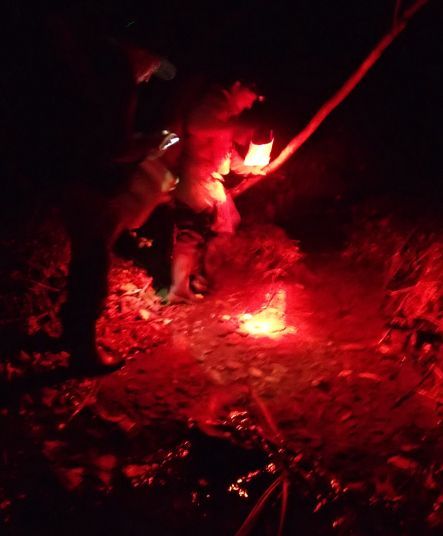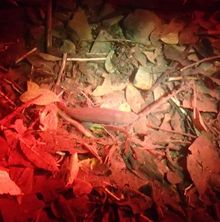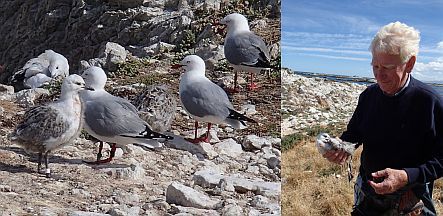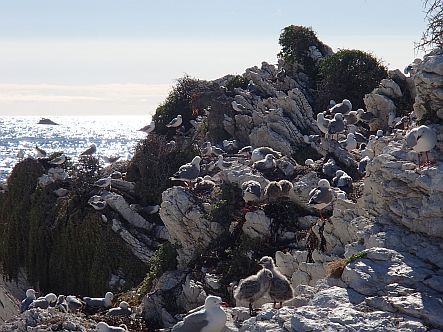Our Changing World for Thursday 9 January 2014
Welcome to Summer Science, a special edition of highlights from 2013
On This Programme
Expressive writing and health
 Popular culture abounds with examples of how writing can improve physical and mental health, using it as a form of therapy. Studies of expressive writing have shown that there is real merit to writing about your deepest thoughts and feelings, and Ruth Beran meets with Elizabeth Broadbent, a health psychologist at the University of Auckland and Iris Fontanilla, a health psychologist with the Auckland District Health Board to speak about their research.
Popular culture abounds with examples of how writing can improve physical and mental health, using it as a form of therapy. Studies of expressive writing have shown that there is real merit to writing about your deepest thoughts and feelings, and Ruth Beran meets with Elizabeth Broadbent, a health psychologist at the University of Auckland and Iris Fontanilla, a health psychologist with the Auckland District Health Board to speak about their research.
Both used the writing paradigm designed by James Pennebaker from the University of Austin, Texas where participants are told to write for three or four consecutive days for 20 minute a day either on their deepest thoughts and emotions  or a control topic, such as time management.
or a control topic, such as time management.
Elizabeth Broadbent (above right) (above left) looked specifically at wound healing in a population aged over 64, and found that there was improved wound healing in the expressive writing group. This study was recently published in Psychosomatic Medicine.
Iris Fontanilla’s (left) study looked at a population of patients with HIV and found that those who wrote about traumatic events showed an increase in their CD4+ lymphocyte count indicating improved immune response. This study was also published in Psychosomatic Medicine.
Trout Eradication at Zealandia

Dave West and David Moss using a red spotlight to look for fish and koura (crayfish) in a stream at Zealandia sanctuary (images: A. Ballance)
Nearly three years ago, on 22 February 2011, Zealandia sanctuary in Wellington and the Department of Conservation joined forces to try and eradicate brown trout from the mainland island’s upper dam and streams. It was a bold experiment, as the poison rotenone had never been used in New Zealand in running water for a freshwater fish eradication.
 But it’s been a resounding success, as Alison Ballance discovered in February 2013. She joined DoC’s Dave West and David Moss for an evening of spotlighting, during an intensive week of monitoring to see if there were still any signs of trout. No trout were found but hundreds of native banded kokopu (left) were seen, so Zealandia and the Department of Conservation have officially declared the eradication a success.
But it’s been a resounding success, as Alison Ballance discovered in February 2013. She joined DoC’s Dave West and David Moss for an evening of spotlighting, during an intensive week of monitoring to see if there were still any signs of trout. No trout were found but hundreds of native banded kokopu (left) were seen, so Zealandia and the Department of Conservation have officially declared the eradication a success.
The lower dam at Zealandia contains introduced perch but it is not yet possible to eradicate these using rotenone – the upper dam and the two streams that run into it could be isolated from other waterways while the rotenone became inactive. Banded kokopu remained in the upper reaches of the streams which were not treated with rotenone, and have been able to reoccupy the streams in very good numbers.
You can listen to a story about electric fishing for perch in the lower dam here.
The CSI-Effect: Student Podcast
Students from the School of Science Communication at the University of Otago learn about the many varied aspects of science communication, including making an audio podcast, and as part of Summer Science we are playing four of this year's student podcasts. This week's podcast is by forensic science student Hannah Forrest, who talks to University of Otago forensic chemist Jurian Hoogewerff, and barrister and law lecturer Len Andersen, also at the University of Otago, about the false expectations and impression of forensic science created by TV dramas compared to the reality, espeically in the courtroom.
Red-Billed Gulls at Kaikoura

The red-billed gull chick (left) has a metal leg band put on by researcher Jim Mills (image: A. Ballance)
Biologist Jim Mills has been studying red-billed gulls at Kaikoura for the last 50 years. Every summer since 1964 Jim and various assistants, including his wife Deborah, have visited the gull colony for several months to record the breeding success of colour-banded gulls and their offspring. Jim currently has around 500 colour-banded birds, and over the course of the study he has banded more than 5000 birds. This is one of only a few studies world-wide that have been going for so long, and for the last couple of decades Jim and Deborah have carried out the field work in their own time.
This long term data set, which covers up to seven generations of birds in the same family, has yielded much surprising information about the birds. The longest lived bird in the study was 31 years old, with many birds reaching 29 or 30 years. There have been no recorded cases of inbreeding, and most birds are very monogamous, having just one or two partners during their life. Only 3% of clutches have eggs fathered by a male other than the male at the nest.
During the study the gull colony at Kaikoura has declined by 51%, due to predation by cats and ferrets, as well as a succession of El Nino events during which warm water prevented gulls reaching their favoured food of krill, causing breeding to fail. A recent paper in Notornis shows that during the same period the number of breeding red-billed gulls in Otago has risen dramatically.
Data from the gulls was recently combined with that from other long-term seabird studies in a landmark paper published in Science that showed that successful long-term seabird breeding relied on forage fish stocks being maintained at one third of the maximum prey biomass.

Red-billed gull colony at Kaikoura, late in the breeding season with chicks that are a few days away from fledging (image: A. Ballance)
Next Week
Urban bats, legal highs, kauri dieback and a marine expedition to the Three Kings islands.